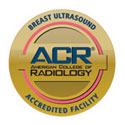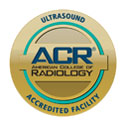

DEXA Bone Density Scan
What is Bone Densitometry?
Bone density scanning, also called dual-energy x-ray absorptiometry (DXA or DEXA) or bone densitometry, is an enhanced form of x-ray technology that is used to measure bone loss. DEXA is today's established standard for measuring bone mineral density (BMD). An x-ray (radiograph) is a painless medical test that helps physicians diagnose and treat medical conditions. Radiography involves exposing a part of the body to a small dose of ionizing radiation to produce pictures of the inside of the body. X-rays are the oldest and most frequently used form of medical imaging. DEXA is most often performed on the lower spine and hips. Portable DEXA devices, including some that use ultrasound waves rather than x-rays, measure the wrist, fingers or heel and are sometimes used for screening purposes.
How should I prepare for my DEXA exam?
On the day of the exam you may eat normally. You should not take calcium supplements for at least 24 hours before your exam. You should wear loose, comfortable clothing, avoiding garments that have zippers, belts or buttons made of metal. You may be asked to remove some or all of your clothes and to wear a gown during the exam. You may also be asked to remove jewelry, eye glasses and any metal objects or clothing that might interfere with the x-ray images. Inform your physician if you recently had a barium examination or have been injected with a contrast material for a computed tomography (CT) scan or radioisotope scan. You may have to wait 10 to 14 days before undergoing a DEXA test. Women should always inform their physician or x-ray technologist if there is any possibility that they are pregnant. Many imaging tests are not performed during pregnancy because radiation can be harmful to the fetus. If an x-ray is necessary, precautions will be taken to minimize radiation exposure to the baby.
For additional information visit:
http://www.radiologyinfo.org/en/info.cfm?PG=dexa







